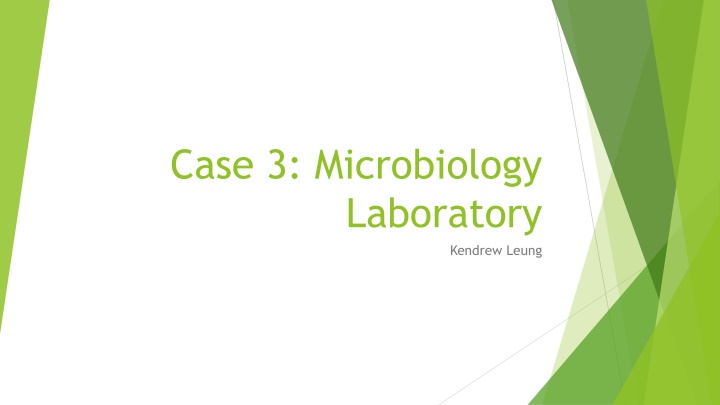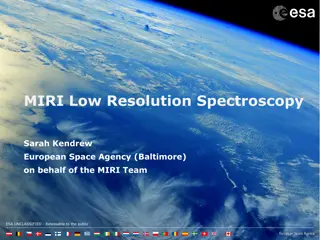
Legionnaires Disease and Common Bacterial Pathogens
Learn about Legionnaires disease, its diagnosis, and common bacterial pathogens associated with similar infectious scenarios. Discover the importance of the Microbiology Laboratory in identifying these diseases.
Download Presentation

Please find below an Image/Link to download the presentation.
The content on the website is provided AS IS for your information and personal use only. It may not be sold, licensed, or shared on other websites without obtaining consent from the author. If you encounter any issues during the download, it is possible that the publisher has removed the file from their server.
You are allowed to download the files provided on this website for personal or commercial use, subject to the condition that they are used lawfully. All files are the property of their respective owners.
The content on the website is provided AS IS for your information and personal use only. It may not be sold, licensed, or shared on other websites without obtaining consent from the author.
E N D
Presentation Transcript
Case 3: Microbiology Laboratory Kendrew Leung
A Cruise Holiday To celebrate Tom s retirement his wife and two adult children accompany him on a long anticipated cruise. Tom s asthma flares up a few days before the cruise but with a corticosteroid nebulizer in tow he feels well enough to join the cruise. Even more than the rest of his family, Tom enjoys the various hot tubs aboard the massive ship those first few days, relishing the relaxation after a busy final year at work. On the fifth day of the cruise, Tom wakes up in a sweat with a cough that continues throughout the day. As the day wears on he feels worse with a headache, muscle aches and nausea accompanying the cough. His wife arranges for the cruise doctor to visit him in his cabin. The doctor examines Tom, notes his high temperature, relatively nonproductive cough and recent history of asthma and corticosteroid therapy. She takes a full history including taking note of his activities during the first days of the cruise and diagnoses Tom with a pneumonia. She explains that her presumptive diagnosis is that of Legionnaires disease and leaves Tom s wife with a sterile sample container to collect whatever fluid Tom might cough up for delivery to her. She explains that she can do a microscopic examination on the respiratory fluid which will help in the diagnosis. In the meantime she starts Tom on erythromycin and lets the family know that she will check in on Tom regularly over the next few days to monitor his progress. More people are diagnosed with a similar pneumonia over the next two days, mostly in people who came aboard with a slightly compromised immune system, like in Tom s case. The cruise ship alerts the hospital at their next port of call in case any of the patients worsen enough to require hospitalization. When they arrive at port blood samples are collected from all of the patients and delivered to the hospital laboratory for serology. The ship also takes extra time in port to allow for a full scale sterilization regime to be performed on all of the hot tubs. At this stage Tom is feeling well enough to continue on the cruise, although at a slower pace than when he first boarded.
Other than Legionella sp., what are the most common bacterial pathogens associated with this type of infectious scenario? Streptococcus pneumoniae Gram-positive anaerobe. known to asymptomatically colonize the respiratory tracts and sinuses of healthy carrier. Poses a greater risk of becoming pathogenic and establishing infection in immunocompromised Staphylococcus aureus Gram-positive human pathogen. Pneumonia is one of the most common infections. Extremely common, and often volatile, in a hospital environment Haemophilus influenza Gram negative anaerobe. Can be either encapsulated or un-encapsulated. The capsule can be considered one of the most important virulence factors. Usually only infect individuals with weakened immune systems Chlamydia pneumoniae Gram negative intracellular bacterium. Long incubation period ~3-4 weeks. Carriers of the bacteria may be contagious, and able to transmit the infection, for an extensive period of time Pseudomonas aeruginosa Gram negative bacteria. An etiological agent of pneumonia and primarily infects immunocompromised hosts Mycoplasma pneumoniae Transmitted easily through contact with respiratory fluids, extremely contagious. Cause an atypical pneumonia, often referred to as 'walking pneumonia .
How important is the Microbiology Laboratory in the diagnosis of this particular infectious disease? Extremely important! Clinical presentation, history, physical exam, and imaging results of legionnaire s disease are non-specific Cannot be used to clinically distinguish legionella from other causes of pneumonia Can inform clinicians of effective treatment plans and recommendation of appropriate medications
What samples are taken for laboratory testing and how LOWER RESPIRATORY TRACT (LRT) SECRETIONS: Very common specimen used. Generally low risks. Patient may produce a cough, wheezing and vomiting with sample collection. LUNG ASPIRATES: Multi-step. Needle inserted percutaneously into ribs, and aspirates are suctioned for 2-3 seconds. Not usually practical for laboratory diagnosis. PLEURAL FUID: Useful for cases of pneumonia that are complicated by pleural effusion. Occurs when excessive fluid enters the pleural space, or the space outside of the lungs BLOOD: Safe and routine method of diagnosing infectious disease. Can inform clinicians of specific antibiotics that may be effective against the bacteria that is involved in the infection URINE: Used and analyzed through antigen detection tests in adults with suspected bacteria pneumonia,and is especially useful for detecting Legionella antigen in adults.
SAMPLE COLLECTION, HANDLING AND TRANSPORT Lower respiratory tract specimens and aspirates: Collection (sputum): the patient will be asked to rinse their mouth and asked to cough and expectorate the sputum into a sterile container, or induced sample may be collected by inhaling saline vapours, which stimulates sputum production Timing: Collection (Pleural fluid, lung aspirates): specimens must be stored in sterile containers. samples can be obtained at any time, but preferably before starting any antimicrobial treatment Handling and transport: All containers must be labeled with patient name, ID, type of specimen, and date collected. During transportation and storage, if the specimen can be plated within several hours, temperature should be set at 2 to 5 C. Otherwise, long-term storage is optimal at - 70 C Possibility of contamination: contamination of specimens can occur due to upper respiratory secretions. Even with thorough collection techniques, it is important to interpret laboratory results of these samples carefully
SAMPLE COLLECTION, HANDLING AND TRANSPORT Bloods Collection: Handling and transport: Aim to reach 80 C to reduce negative effects. To maintain this temperature, any frozen samples should be stored with dry ice small volume of blood samples following proper phlebotomy technique
SAMPLE COLLECTION, HANDLING AND TRANSPORT Urine Collection: Timing: the sample (10 20 mL) may be stored directly into sterile container urine samples should be collected within 7 days of onset of symptoms of pneumonia Handling and transport: All containers must be labeled with patient name, ID, type of specimen, and date collected. Keep at 4 C (transported on wet ice) Urine samples that have been frozen at -20 to -70 C remain stable and can be used later
Explain the tests that will be performed on the samples in order to detect any of the potential bacterial pathogens causing this disease. Cultures are considered the gold standard for Legionella diagnosis Samples: aspirates, sputum, bronchoalveolar lavage fluid and pleural fluid First perform gram stain to confirm presence of gram-negative bacteria Once confirmed, incubate sample in cell culture plate plate should be incubated at 35 C for optimal growth conditions Results are often obtained within 3-5 days of plating Confirmation of L. pneumophila presence can be completed using matrix- assisted laser desorption ionization time of flight (MALDI-TOF), a form of mass spectrometry PCR may also be used to confirm the presence of genes specific to L. pneumophila.
Tests PCR tests can be used to amplify areas of L pneumophila genome Amplified bands of sample are compared with control DNA to confirm presence of bacteria Favorable because it does not require sputum samples, which not all patients may produce Direct Fluorescent Antibody (DFA) is a rapid test used after incubating cultures Inexpensive and commercially available, but high rates of false positive and false negative Urinary Antigen Test (UAT) can be used 2-3 days after symptoms appear Rapid, accessible, and reliable results ever after long periods Serological testing detects immunoglobulins, specifically IgG, IgM, IgA antibodies Most commonly, indirect fluorescent antibody test is used





















